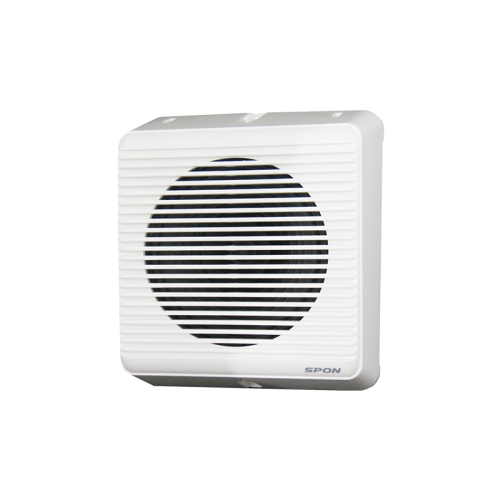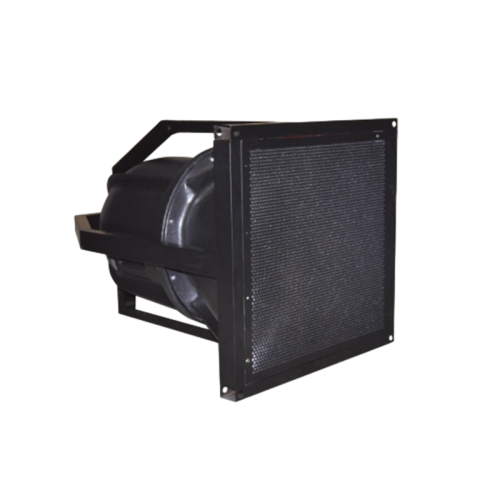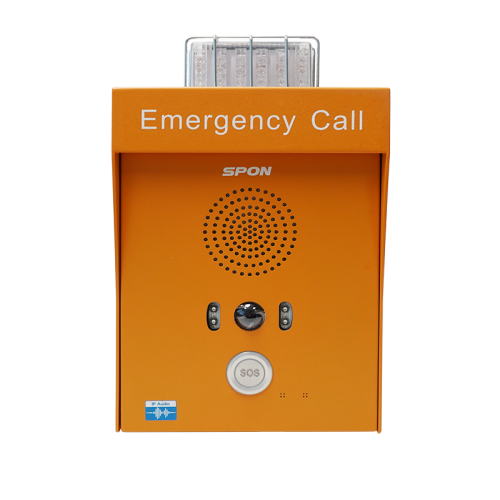SPON Communications: Leading the Way in Cutting-edge IP PA System Designs
SPON Communications: Leading the Way in Cutting-edge IP PA System Designs
Blog Article
Comprehensive Guide to Public Address Systems
Public address (PA) systems are generally encountered in different projects such as office complex, property complexes, business workplace buildings, schools, medical facilities, railway stations, airport terminals, bus manufacturing facilities, financial institutions, and stations. This overview will give a thorough introduction of PA systems.
Components of a PA System
No matter of the kind of PA system, it normally contains 4 primary components: resource tools, signal amplification and handling equipment, transmission lines, and audio speaker systems.
Source Devices
Music Athletes: Used for history songs.
Microphones: Includes zone-select microphones and conventional microphones.
Voice Storage Space Gadgets: For saving service and emergency situation broadcast messages.
Signal Handling and Amplification Devices
Audio Signal Cpu: Manages audio signal compensation, depletion, equalization, etc.
Pre-Amplifier: Pre-amplifies audio signals.
Power Amplifier: Enhances audio signals to drive audio speakers, providing continuous voltage outcome.
Transmission Lines
The service management platform software program permits the tracking facility to exert centralized administration over the program and intercom communication systems. It promotes live gadget condition monitoring, mistake medical diagnosis, and troubleshooting, solidifying system dependability and uniformity.
Audio Speakers
Ceiling Audio Speakers: Indoor, flush-mounted in the ceiling, continuous voltage or continuous insusceptibility.
Wall-Mounted Speakers: Wall-mounted, constant voltage or continuous resistance.
Column Audio Speakers: Free-standing, ideal for outside or interior usage.
Horn Speakers: High level of sensitivity, appropriate for interior or outdoor use.
Camouflaged Speakers: For exterior settings like yards or parks, created to resemble stumps, rocks, or mushrooms.
Audio Technical Specs of PA Solutions
In everyday atmospheres, typical audio stress degrees are:.
Workplace sound: 50-60 dB.
Normal discussion: 65-70 dB.
Fabric manufacturing facility noise: 110-120 dB.
Small quality gunfire: 130-140 dB.
Big jet aircraft sound: 150-160 dB
Signal-to-Noise Proportion (SNR)
SNR gauges the ratio of the signal voltage to sound voltage, expressed in decibels. A higher SNR shows much less noise and much better audio top quality. Generally, SNR ought to be at the very least 63 dB, with high-fidelity audio speakers reaching over 110 dB.
Input Sensitivity
This is the minimal input voltage required to attain the rated output power. Higher sensitivity indicates less input signal is needed. Usually, power amplifiers have an input sensitivity of 0.775 V (0 dB) to 1.5 V (+6 dB)
Optimum Outcome Power (Audio Speakers)
The optimum power a speaker can manage simply put bursts without damage.
Rated Power (Audio Speakers)
The constant power a speaker can manage without distortion, gauged in watts (W) Ranked power is an ordinary worth, and audio speakers can deal with peak power as much as 2-3 times the ranked power.

Constant Voltage (70V or 100V)
Makes use of voltage to drive speakers, allowing longer transmission distances and numerous audio speakers in parallel. Nevertheless, sound top quality is slightly substandard contrasted to constant resistance systems.
Power amplifiers have to match the voltage rating of the audio speakers to stay clear of damage.
Continuous Impedance.
Uses current to drive audio speakers, supplying far better sound quality however restricted transmission distance (approximately 100 meters)
Impedance matching is crucial; as an example, an 8Ω amplifier should be matched with 8Ω speakers.
Choose and Configuring Audio Speakers
Speaker Option
Indoor Spaces with Ceiling: Use flush-mounted ceiling speakers without a back cover.
Indoor Spaces with Only a Framework: Usage ceiling audio speakers with rear covers or hanging ball-type speakers.
Exterior Areas: Usage weatherproof column speakers or horn speakers.
Parks and Gardens: Use concealed audio speakers created for visual purposes.
High-End Interiors: Usage stylish dangling speakers.
Fire-Safe Locations: Use fire-resistant audio speakers with covered designs.
Speaker Arrangement
Speakers must be distributed uniformly throughout the solution location to ensure a signal-to-noise proportion of at the very least 15 dB. Regular history noise degrees and advised speaker positioning are:.
Premium workplace corridors: 48-52 dB.
Big shopping center: 58-63 dB.
Busy road locations: 70-75 dB.
Audio speakers should be positioned to make certain a sound stress level of 80-85 dB in a lot of atmospheres. Ceiling speakers ought to be spaced 5-8 meters apart, or 8-12 meters for history songs only. For emergency situation programs, guarantee that no location is greater than 15 meters from the nearby audio speaker.
Amplifier Sizing
Calculation Technique:
For service and business PA systems: P= K1 × K2 × ΣPo where:.
P = Total amplifier outcome power (W)
K1= Line loss settlement aspect.
K2 = Aging element (1.2-1.4)
ΣPo = Overall power requirement.
For emergency alarm systems, utilize 1.5 times the overall variety of audio speakers.
Instance Estimation:
For a background music system with 10 speakers at 20W each: P= 1.26 × 1.2 × 10 × 20W × 0.7= 211W.
Final amplifier capacity should be 1.3 times this value: 211W × 1.3= 274W
Setup Demands
Speaker Placement
Speakers must be evenly and purposefully dispersed to meet insurance coverage and audio high quality needs.
Power Supply
Tiny PA systems can make use of normal power electrical outlets, while systems over 500W call for a committed power supply. Power needs to be steady, with automated voltage regulators if necessary. The power supply should be 1.5-2 times the equipment's power consumption.
Cable and Avenue Setup
Usage copper-core wires for signal transmission. Wires should be secured and routed through ideal avenues, staying clear of interference from electric lines. Guarantee proper separation between power and signal lines.
Lightning Defense and Grounding
PA systems need proper grounding to prevent damages from lightning and electrical disturbance. Usage devoted basing for equipment and ensure all basing actions satisfy safety standards.
Installment High Quality
Cord and Port Quality
Usage top notch cable televisions and connectors. Make certain connections are secure and appropriately matched to prevent signal loss or disturbance.

Keep appropriate stage positioning in between audio speakers. Usage reliable methods for linking wires, such as soldering or terminal blocks, and shield links from environmental damage.
Grounding and Security Checks
Validate all grounding is correctly installed and examine the safety and security of power links and equipment settings. Carry out detailed inspections before settling the installation.
Evaluating and Modification
Evaluate the entire system to make certain all parts work correctly and fulfill layout specs. Adjust setups as needed for optimum efficiency.
Craftsmanship Needs for Public Address Solutions
Building Quality Needs
The high quality of construction in a public address (PA) system project is critical to satisfying layout specs and customer requirements. Therefore, it is vital to purely comply with the design strategies, follow standards, stay clear of rework and delays, and keep detailed construction logs. Key locations to focus on include:
Wire Selection and Setup
Throughout the construction of a PA system, attention is often concentrated on equipment, however the choice of transmission cables is likewise essential for achieving adequate audio quality. Premium broadcasting tools (amplifiers, audio speakers, and so on) is required, yet the top quality of the transmission cables additionally affects sound quality.
Parallel speaker cables have integral capacitance in between the cords, which is not suitable for long-distance transmission as it can attenuate high frequencies and cause uncertain or stifled high noises. Twisted set cable televisions can successfully overcome this problem and must be utilized for long-distance transmission.
Protected twisted pair cords prevent electromagnetic interference and improve cord longevity, making them ideal for long-distance installations. Thicker cables reduce transmission loss but increase expense and installment trouble.
Use balanced links for all signal links between PA system gadgets, with soldered endpoints.
For systems with fire alarm system functions, use fireproof or flame-retardant copper-core cords.
Cable televisions ought to be routed via steel conduits or cable trays, and ought to not share trays with lighting or high-voltage line. Fire alarm system cables have to have fire defense actions. The flexing span of cable televisions should be no less than 15 times the cord size, and power line must be separated from signal and control cables. Verify cable television lengths before installation and match them to the design drawings, reducing cable television splices. Use specialized adapters and leave sufficient cable size at both ends with clear irreversible markings. when splicing is required.
Connecting Speakers and Broadcast Lines
When attaching audio devices, it's important to guarantee phase uniformity between speakers and program lines. Phase disturbance in between audio speakers can cause substantial variants in audio stress levels, leading to irregular audio circulation. Adhere strictly to electrical wiring labels and standard connection approaches.
Three usual link approaches in systems are:.
Twisting Technique: Stripping insulation IP Speaker from cords, twisting them together, and safeguarding them with tape or clamps. This method is straightforward yet might degrade gradually.
Screw Terminal Technique: Stripping insulation and putting cords right into screw terminals, after that tightening up the screws. This technique is generally utilized.
Soldering Technique: Removing insulation, turning cords, and soldering them together, then covering with tape. This technique is a lot more dependable and suitable for high-demand or damp environments.
No matter of the technique, use tinned cord to facilitate soldering and protect against rust. Use PVC or steel conduit to secure subjected cords from junction boxes to audio speakers.
System Grounding
To lessen interference from the power system, different protective and functional groundings ought to be developed. Suggested practice is to set up separate copper strips for solid and weak electric systems in their respective upright shafts.
The overall grounding resistance need to not exceed 1Ω.
Construction Evaluation
Due to the intricacy of systems with various links and parts, thorough evaluation is needed. General evaluations should consist of:
Security checks of tools installment.
Confirmation of high-voltage line arrangements.
Precision of connections and discontinuations.
Special interest must be provided to tool settings, such as insusceptibility matching buttons on speakers. Confirm that switches are established correctly to avoid damage. Inspect the outcome option switches over on signal resource devices, setups on signal handling devices, amplifier connecting switches, and power supply settings.
When these actions are verified, get ready for devices debugging. Given that debugging techniques vary based upon specific task requirements, they are not covered carefully below.
Quality Records
Certifications, technical requirements, and documentation for audio speakers, units, transformers, controllers, outlets, amplifiers, audio handling equipment, protected cords, etc
Pre-installation, concealed examination, self-inspection, and shared assessment documents.
Records of layout modifications and final drawings (IP Speaker).
Quality assessment and assessment documents for channel and wire installment
Records of system installation and debugging.
Significant Installation Needs
Tools Installment Order
Area frequently made use of devices like the major broadcast controller at the top for very easy accessibility. For even more complex systems with a 2.0-meter cabinet, position frequently utilized devices in between 0.8 to 1.5 meters for benefit.
Tools Link Order
Link the computer system to the major broadcast controller. Audio lines usually connect straight to the input of the preamplifier or the initial channel of the mixer. The mixer outcomes are dispersed per amplifier, and if using pure power amplifiers, link to the INPUT audio input. Amplifier outcomes then attach to addressable terminals, zone control boxes, or area selectors, and ultimately to the audio speakers - IP Paging System.
Circuitry Considerations

Power Supply
Utilize a devoted power sequencer for systems to guarantee consistent power management and constant tool startup series. The major power supply must consist of a ground line to shield devices and prevent static-related hazards.
Equipment Selection
Do not count exclusively on look; take into consideration customer testimonials and market online reputation. Products from trustworthy producers with substantial testing and experience are normally a lot more reliable.
Wireless Microphones
For cordless microphones, pick UHF designs for better array and signal security. Alternatives consist of one-to-one, one-to-two, one-to-four, or one-to-eight arrangements (IP Speaker). For mobile use, choose headset microphones. Lavalier microphones may have poorer sound high quality and are susceptible to comments.
Link Wires
Use strong connections for durability and prevent relying upon adapters, which can cause loosened connections with time. Appropriately solder connections to ensure toughness and simplicity of maintenance.
Closet Setup
If utilizing deep power amplifiers, ensure the closet measurements (e.g., 600x600mm) are compatible with the devices. Step cabinet depth and spacing before setup.
Correct planning, high-grade tools, and thorough setup and maintenance are essential to attaining optimal sound quality and trustworthy efficiency in a PA system.
Normally, SNR should be at least 63 dB, with high-fidelity speakers reaching over 110 dB.
Audio speakers ought to be placed to ensure a sound pressure level of 80-85 dB in a lot of settings.When attaching audio devices, it's vital to make certain stage uniformity in between audio speakers and broadcast lines. Phase disturbance in between speakers can cause considerable variations in audio stress degrees, leading to uneven audio circulation. Amplifier outputs after that attach to addressable terminals, area control boxes, or zone selectors, and lastly to the speakers.
Report this page